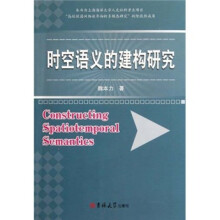序
前言
Abstract
Chapter One Introduction
1.1 Research Purpose
1.2 Rationale
1. 2. 1 Spatiotemporal Location
1.2.2 Philosophical Interpretation
1.2.3 Linguistic Construal
1.3 Assumptions
1.3.1 Semantic Function
1.3.1.1 Locative Circumstance
1.3.1.2 Circumstantial Element
1.3.2 Lexicogrammatical Structure
1.3.2.1 Preposition and Prepositional Phrase
1.3.2.2 Locative Prepositional Phrase
1. 4 Methodology
1.4.1 Methods
1.4.2 Data
1. 5 Terminology
Chapter Two Previous Study
2.1 Overview
2.2 The Traditional Approach
2.3 The Generative Approach
2.4 The Cognitive Approach
2.5 The Systemic Functional Approach
2.6 Summary
Chapter Three Generic Realization
3.1 Overview
3.2 Text Analysis
3.2.1 Textual Meaning
3.2.2 Textual Variation
3.3 Generic Generation
3.3.1 Semantic Processing
3.3.2 Lexicogrammatical Processing
3.4 Generic Recognition
3.4.1 Topical Development
3.4.2 Structural Development
3.5 Generic flealization
3.5.1 Spatial Progression
3.5.2 Temporal Progression
3.6 Summary
Chapter Four Spatiotenlgoral Meaning
4.1 Overview
4.2 Transdomain
4. 2. 1 Concrete Meaning
4.2.2 Abstract Meaning
4.3 Measurement
4.3.1 Measurable Meaning
4.3.2 Measureless Meaning
4.4 Dimension
4.4.1 Simple Dimension
4.4.2 Compound Dimension
4.5 Temporality
4. 5.1 Space--like Time
4.5.2 Spatiotemporal Parallelism
4.6 Summary
Chapter Fivg Le~cogram~~ Realization
5.1 Overview
5.2 Phrase Analysis
5.2.1 Syntactic Component
5.2.2 Syntactic Relation
5.3 Clause Analysis
5.3.1 Foregrounding
5.3.2 Backgrounding
5.4 Clause Complex Analysis
5.4.1 Expanding
5.4.2 Rankshifting
5.5 Summary
Chapter Six Conclusion
6.1 General Summary
6.2 Limitation
6.3 Further Investigation
Bibliography

 缺书网
缺书网 扫码进群
扫码进群





